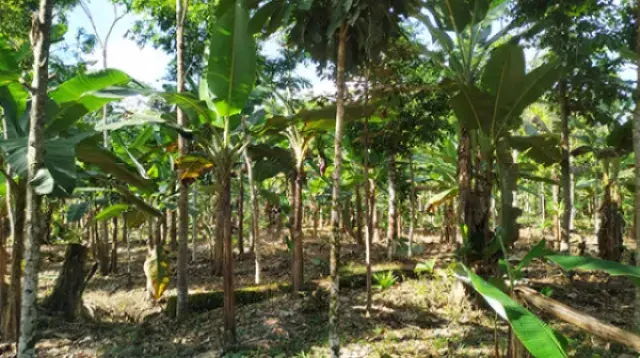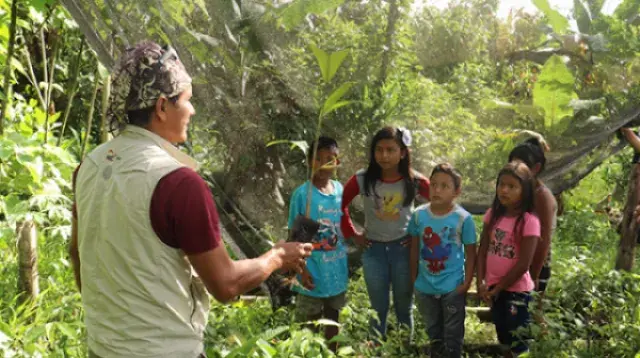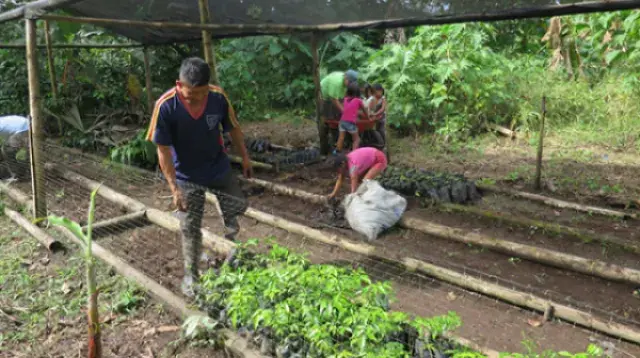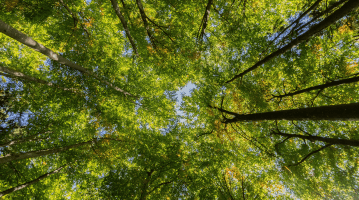Embracing Agroforestery to save the ecuadorian rainforest
Is it possible to curb deforestation in the Amazon rainforest while improving living conditions for indigenous populations? That's the mission that inspired the launch of the Ishpingo Foundation, the Klorane Botanical Foundation’s partner in Ecuador with a focus on agroforestry, training and awareness-raising among Kichwa farmers.


Micke Science explains !
Micke Science explains how the NGO Ishpingo combats deforestation and the poverty dilemma in Ecuador. Facing destructive gold panning, local families find a sustainable alternative: agroforestry! With the help of Klorane Botanical Foundation, Ishpingo transforms low-yield lands into food forests. These virtuous practices enable reforestation and self-sufficiency, while preserving the unique biodiversity of the Amazon and ensuring a more stable economic future for local communities.
A commitment to nature and humanity !
Micke Science, science communication content creator
Forest vs farming
With over 50% of its territory covered by the Amazon rainforest, Ecuador has a front-row seat to the problems associated with deforestation. The country is a biodiversity hotspot, but is losing between 1.5 and 2% of its forest cover each year due to the combined effect of urbanisation, oil exploitation, and the expansion of land used for farming. But for those living in Amazonian regions, deforestation is a necessary evil. In these remote areas, agriculture is usually the only source of income and farms need to take over more and more of the forest to support the population as it develops.
Agroforestry, meanwhile, presents an alternative means of subsistence – one that does not involve pitting farmland and forest cover against each other. For several years now, the Ishpingo Foundation has been working hand-in-hand with farmers from Kichwa communities to develop an agricultural approach capable of simultaneously preserving ecosystems and ways of life. These descendants of the Quechuas in the Andes make up a community of nearly 100,000 people living in the Ecuadorian Amazon region, and who rely on what is essentially an agricultural economy.

Restoration and diversification
Agroforestry involves combining agricultural production and tree plantations on the same plot of land. It is based on the principle of co-benefits, and is an ethical method of managing space and resources. Trees promote the conservation of the biodiversity needed to protect and develop crops. They also play an important role in maintaining a healthy water cycle, and help to stabilise the soil and improve its fertility. A win-win situation in return for giving up just a little land!
Amazonian plants to the rescue
This is at the core of the work this organisation is doing, backed by the Klorane Botanical Foundation since 2021 as part of a six-year partnership agreement. Ishpingo supports Kichwa farmers to adopt new practices by delivering targeted training and awareness-raising activities, as well as setting up community nurseries. To ensure the reforestation taking place is sustainable and of a high quality, species are carefully selected: big-leaf mahogany (Swietenia macrophylla), chuncho (Cedrelinga cateniformis), the pink trumpet tree (Tabebuia sp.), to name a few: the farmers choose from around forty endangered native species that are perfectly adapted to conditions in the Amazon rainforest. A number of fruit-bearing and medicinal varieties are also selected to enable the Kichwas to diversify their food and production options, in addition to the timber used for crafts and construction. A minimum of 15 different varieties are planted per plot, to promote the diversity and resilience of the restored ecosystem.

An organised, community-based method
An initial consultation is held with participants to assess the capacity of their plots and determine the best roadmap to follow. Agroforestry can be adapted to different conditions and goals: plants can be spread out between crops or they can be used to create a boundary of trees, depending on the space available. A long-term plan is drawn up with each farmer to select temporary subsistence crops, which will then be replaced by ombrophilous species (those tolerant of wet conditions) once the forest cover has been re-established. Community nurseries are created to provide a sufficient quantity of quality plants and serve as a training resource.
Passing down expertise and raising awareness
Every year, nearly 25 families receive extensive support. Collectively, farmers are trained in nursery management and exploitation techniques. Individually, they receive training in agroforestry techniques to optimise the way they manage their own plot. These skills include maintenance, managing shade, rotating plants, preserving biodiversity and controlling pests, but also how to harvest and transport fruit, transform plants into medicines, or use timber.
The next generation is also involved in this community project, with activities incorporated into annual school curricula. Each year, one school receives training in the principles and challenges of sustainable development. During specially organised field trips, students learn to recognise and care for local species. A nursery and an arboretum are created in the school, and children are able to take fruit trees home to their families.

Identifying future income sources
With the aim of diversifying the Kichwa economy, Ishpingo and the Klorane Botanical Foundation have started working to identify local plants that could be transformed and sold, to create new sources of income for the community. Research into the development of these future sustainable revenue streams will focus on essential oils, gums, resins and other ingredients.
Our work involves convincing farmers to opt for agroforestry rather than monoculture.” It is a multi-generational endeavour and engages the whole community. The first step is therefore cultural. Next, we ensure that knowledge and tools are passed down to ensure this reforestation process is sustainable in the long term.
“Our work involves convincing farmers to opt for agroforestry rather than monoculture.” It is a multi-generational endeavour and engages the whole community. The first step is therefore cultural. Next, we ensure that knowledge and tools are passed down to ensure this reforestation process is sustainable in the long term.”
Antoine Vullien, Co-Founder of the Ishpingo Foundation
Our partners
The Ishpingo Foundation is a French and Ecuadorian non-governmental organisation and was founded in 2005. Its aim is to improve the social, economic and environmental conditions of native populations of the Amazon rainforest, and to reforest and preserve biodiversity by developing agroforestry projects.

What is agroforestry?
Trees blooming and animals grazing between rows of crops? A happy world where pulling together is the name of the game! (Re)discover the principles of this biodiversity-boosting concept.
